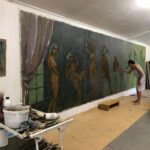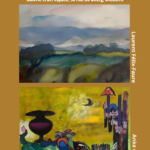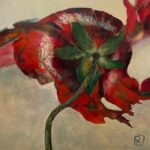Anke de Vries – To Create a Collage I Let My Subconscious decide
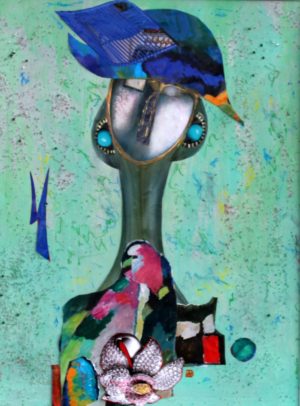
SOUSPIERRE
Most people are not aware that France with 36000 municipalities for a population of 65 million inhabitants, is the European local-authorities champion. Germany trails far behind with 12000 for 82 million inhabitants and Italy 8000 for 60 million. Souspierre is one of the 267 municipalities of the Drôme Provençale and it is without any doubt one of the smallest. The figures mentioned above are telling for they show how close the relationship can be between residents and their administrators, particularly in the case of smaller communities where each inhabitant’s business becomes everyone’s concern. This is true of Souspierre that numbers one hundred souls – one more if there is a birth, one less if someone dies, discounting the years when one replaces the other. A closely knit community with a mayor who officiates wearing the traditional tricolour sash, nine Councillors and when important matters are discussed an attendance of up to 15 residents who ask questions after the meeting.
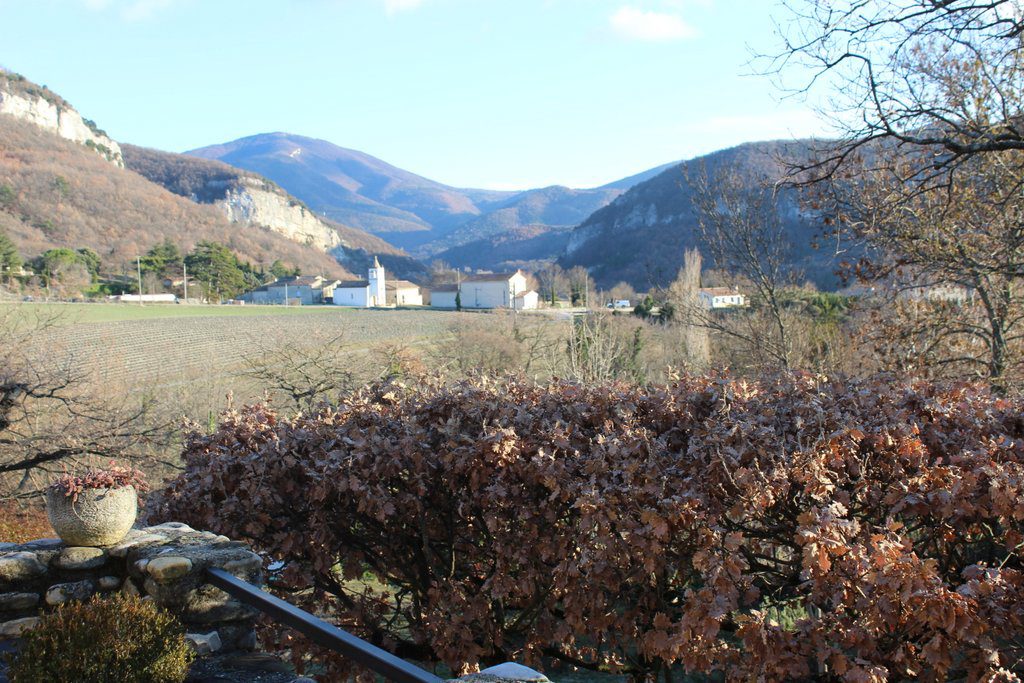
The village of Souspierre is set in a beautiful little valley, contained on one side by richly carved limestone cliffs and on the other a lower rising hillside where Anke de Vries has her home and her studio. “Each day when I get up” she says: “ I enjoy a spectacular view of the cliffs and our tiny village with the little church of Saint Sebastian, behind which the landscape widens. In the distance I can see the 900 meters high “mont” Rachas and if I turn to the east, rolling hills that border the plains and run up to the Rhône River 20 km away. The surroundings are so varied and breathtaking when the light changes, that just looking is enough to fill me with a sense of peace and harmony. It makes me want to express my feelings by writing, or by making a collage!”
Anke de Vries moved from Holland, her homeland, to Souspierre with her French husband Laurent Félix-Faure who is a painter in 2001. She welcomes visitors to her studio on appointment.
ANKE DE VRIES
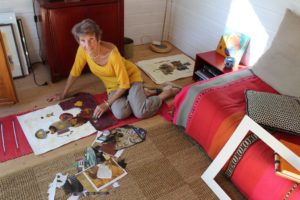
When she left school Anke de Vries wanted to attend art school in the neighbouring town of Arnhem in The Netherlands where she lived. At the time Holland was still an extremely conservative country and it would have been quite a revolutionary step. Circumstances prevented her in the end from realising her dream. However, her interest in art did not die or as she often says “the urge to create something with my hands has never left me.” She married, brought up three children and went on to become a best-selling author of books for children and young adults, with 75 books to her credit and translations in some 15 languages. There is a saying in Dutch that “Blood will always creep where it can’t go” and Anke’s fingers were itching. So she started making “Collages.” Having had no formal training, not really wanting to be told how to make them and being in heart and soul an artist, they turned out to be highly original with an intimate quality that immediately caught the eye of art lovers. Soon, successful exhibitions followed. Today, after building up a reputation as a writer Anke has embarked on a new form of art, spending hours in the little wooden cabin at the bottom of her garden making “Collages.”
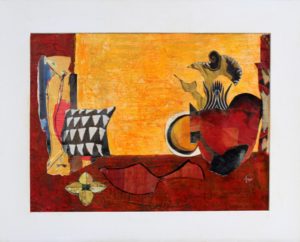
Why Collages, and not drawing, painting or sculpture?
“I don’t know. If I look back I think it might have begun when I was a little girl. I remember how I spent hours dressing a doll with cut-out paper dresses. They were my first “Collages” I suppose. When I grew older I made my own dresses and later on those of my daughters. I enjoy fashion but I am just as happy in a hardware store as in a boutique for I like mending things. The step toward making “Collages” was therefore not such a big one to take.
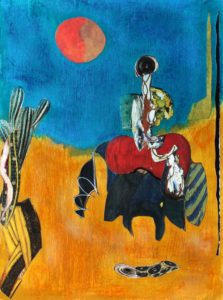
Can you describe how you go about it when you make a “Collage?”
First of all, chaos! My drawers are crammed full of torn and cut out pieces of paper taken from all sorts of magazines and journals. Armed with scissors I literally pounce on old art magazines and before you know it the works of Matisse and Picasso have been mutilated beyond recognition. I also collect every conceivable kind of materials such as bits of wood and bark, pieces of cloth, string, etc. all waiting to be included in my collages. Close at hand there are always pastels, wax crayons, ink, acrylics and a lot more to add colour and graphics. Piecing these elements together in order to achieve a satisfactory whole can be time consuming even if the “Collage” is a small one. The amount of concentration is so intense that I am often exhausted by the end of the process. I don’t have a set image when I start out but a vague idea that might have been inspired by a form or a combination of colours. I then proceed by leaving it to my subconscious mind to decide what the next step will be. When it works and my intuition tells me there is nothing more to add I am sometimes overwhelmed by a feeling of exhilaration. I imagine it must be the Dopamine in my brain soaring to record heights. So drugs are not for me, a “Collage” will do!
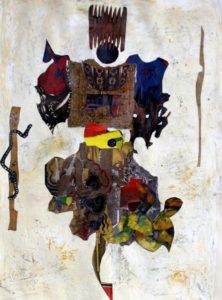 Are there artists who influence the way you work?
Are there artists who influence the way you work?
Yes and no. There are many, both living and dead that I admire and there is nothing I enjoy more than to study their work. I pour over art works and I visit museums and subconsciously I expect, I absorb what I see. On the other hand it has never entered my mind to copy them. This being said there are quite a number of artists whose work I admire. The Dada artist Kurt Schwitters is an inescapable reference when it comes to “Collages” and others like Matisse for his use of colour, the whimsical art of the Spaniard Miro, or again the Italian Buri who can fascinate by slashing a rough burlap sack or burning black holes and scars in plastic. I also love African art or again the refined work of the Swiss-German artist Paul Klee.
***
Gallery Craft espace
Books by Anke de Vries (in Dutch)
Link to interview with Anke de Vries (in Dutch)
